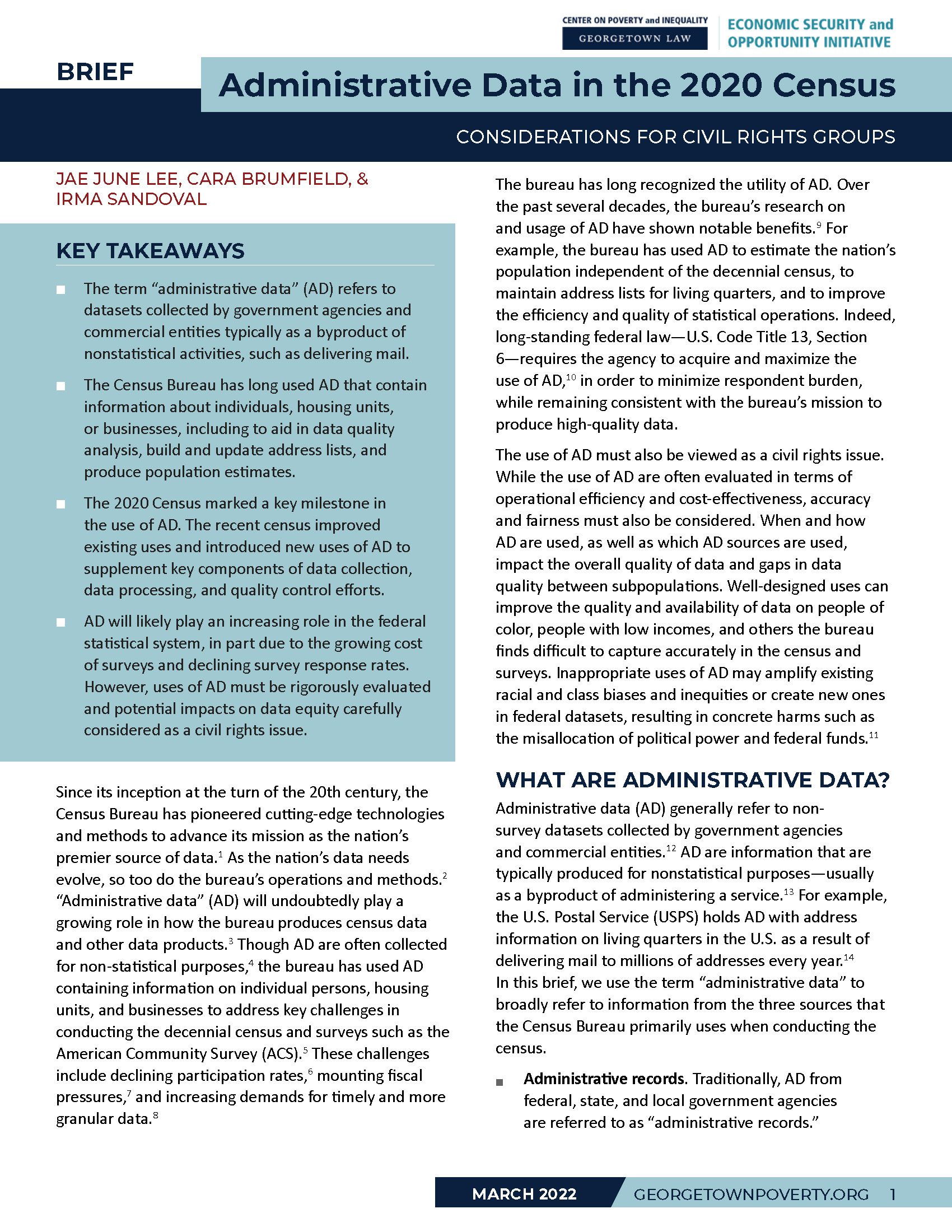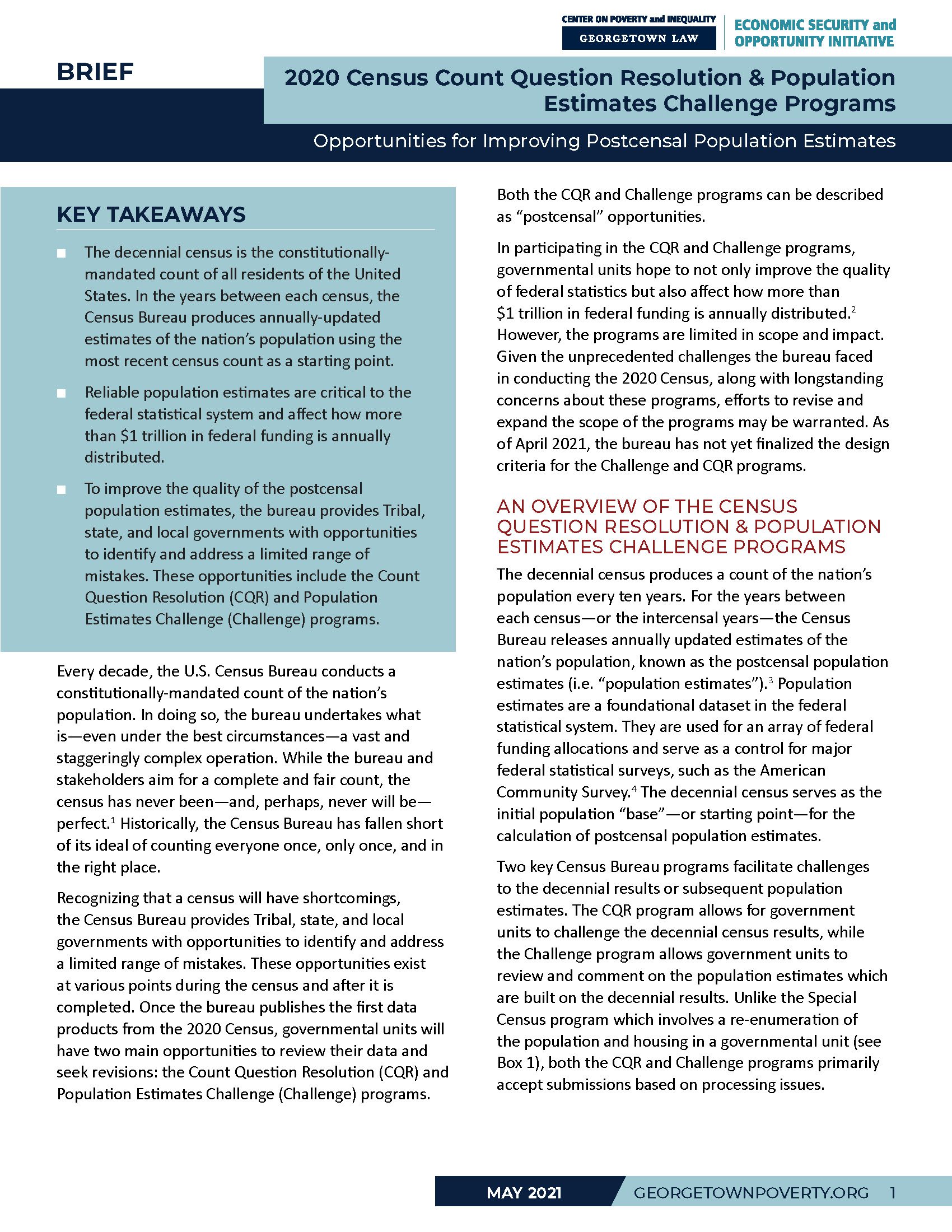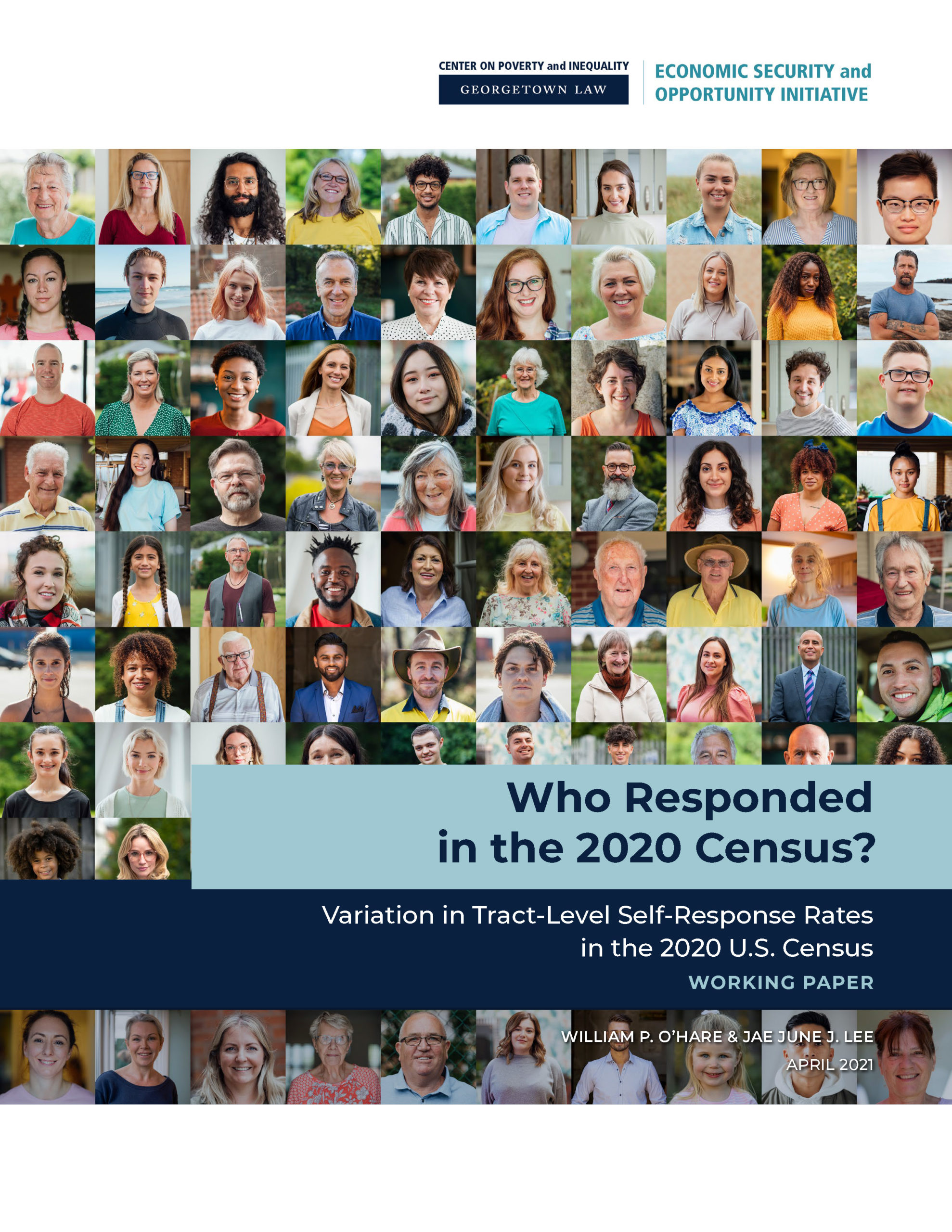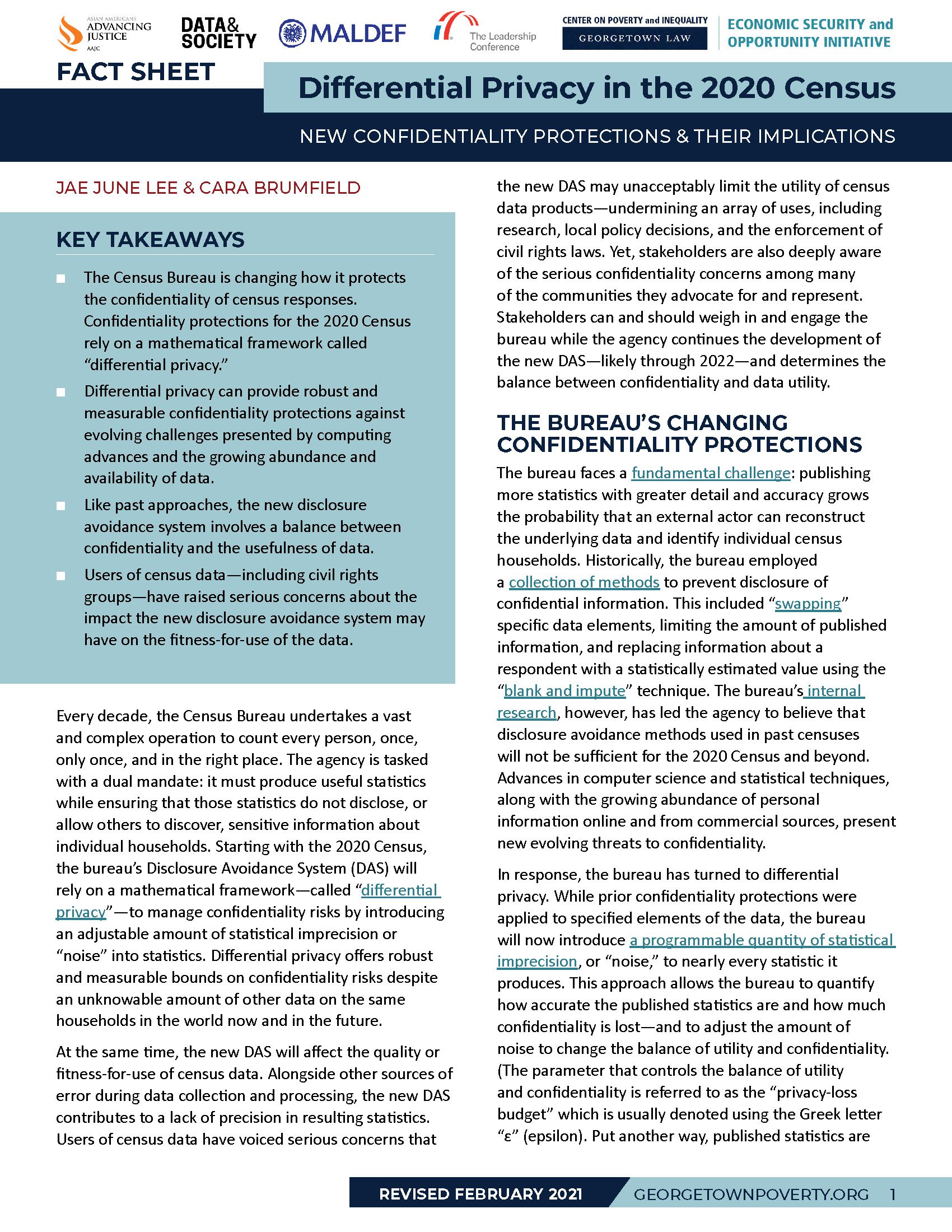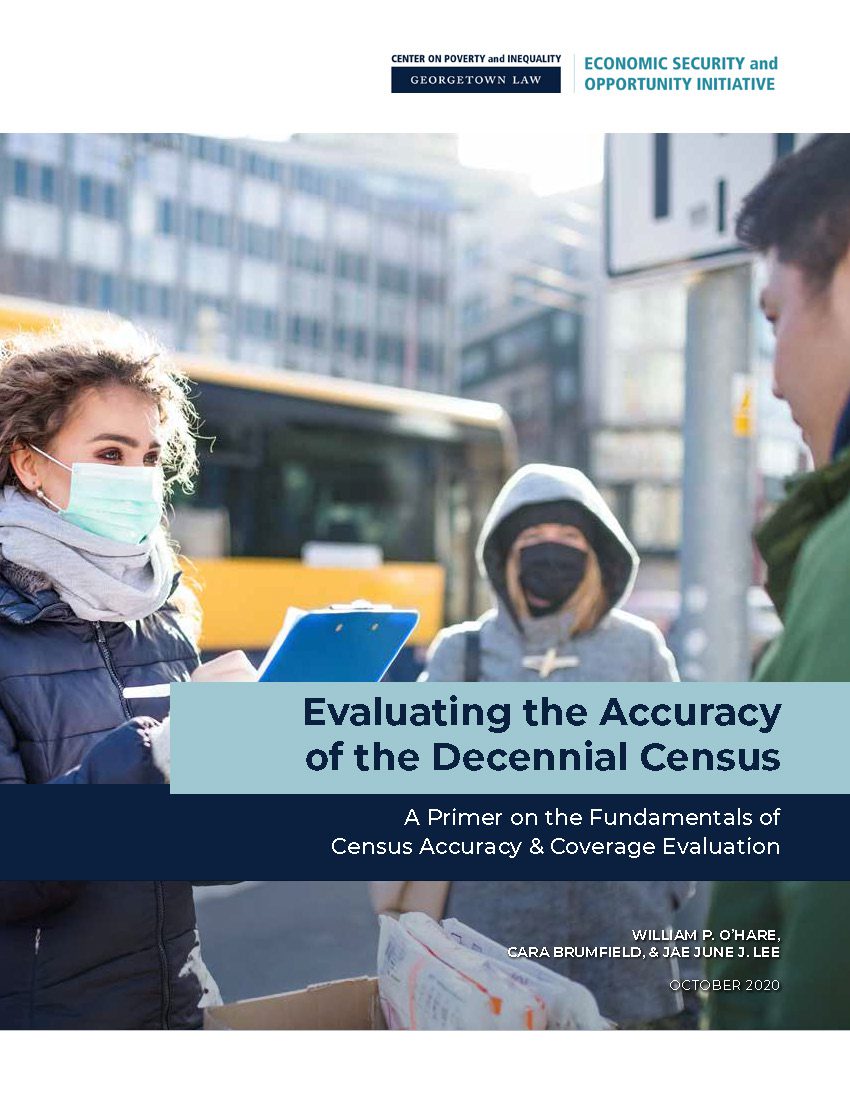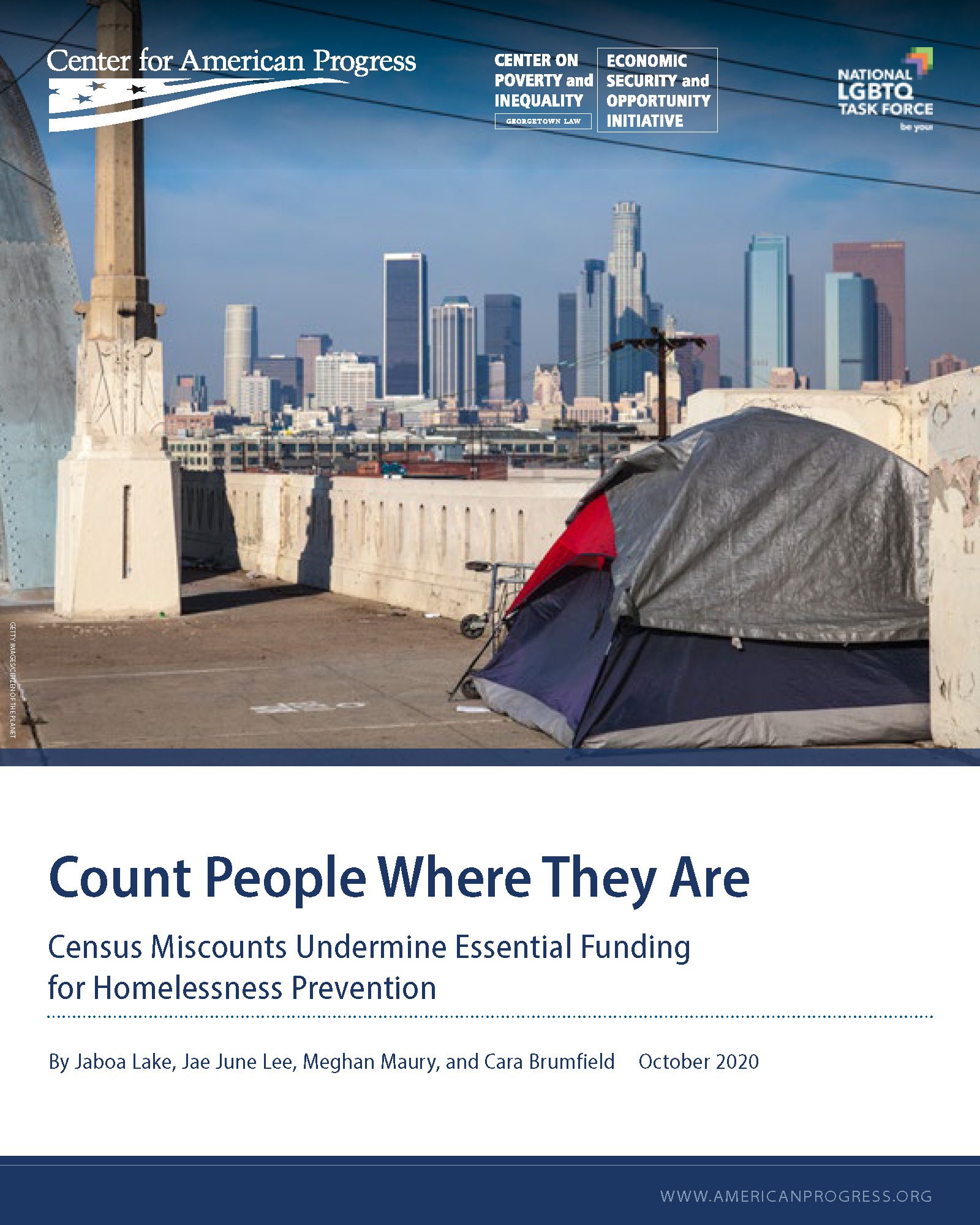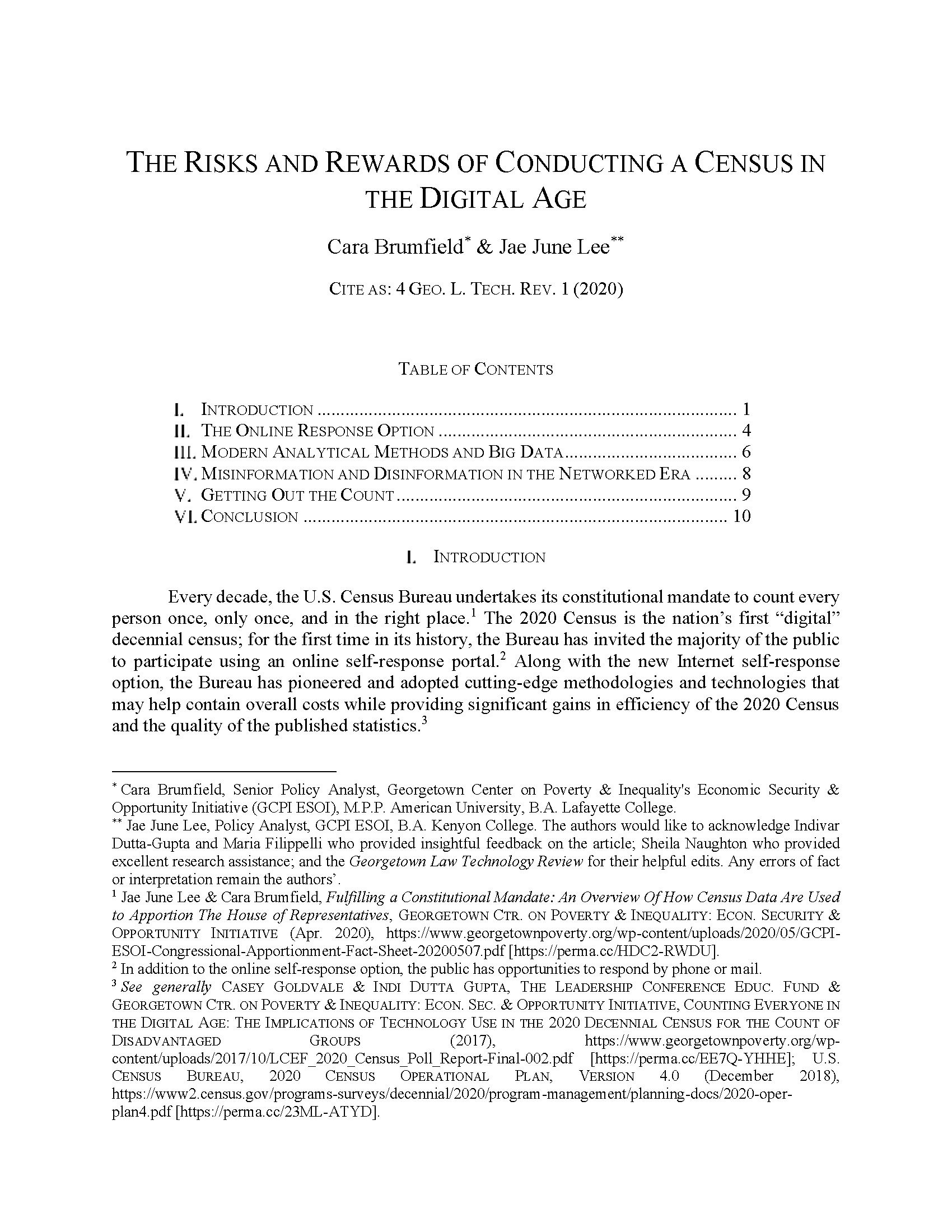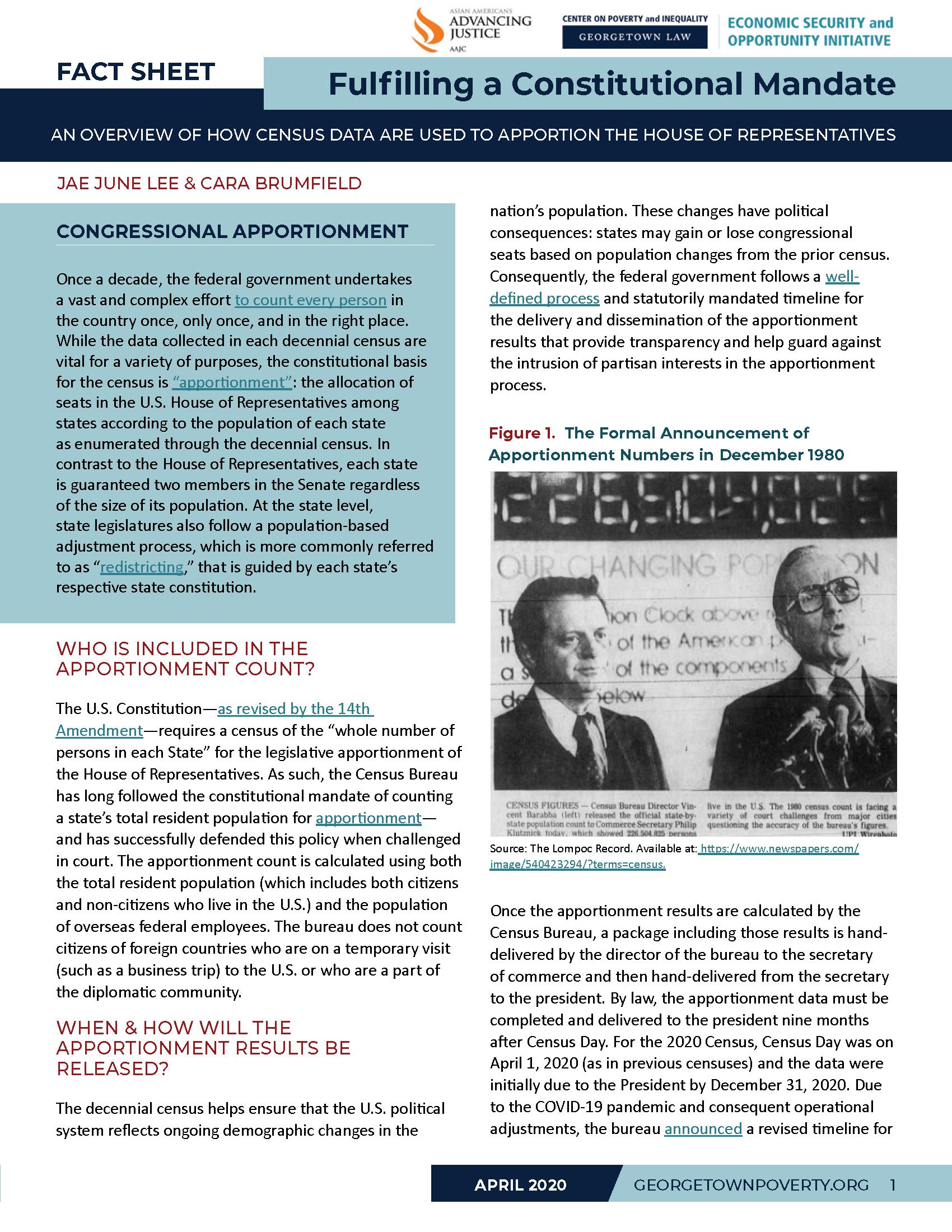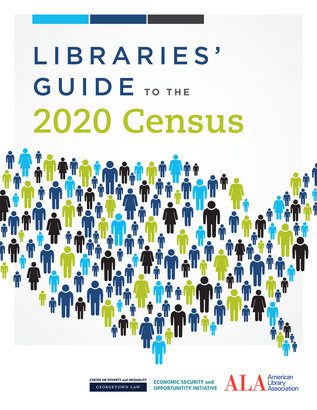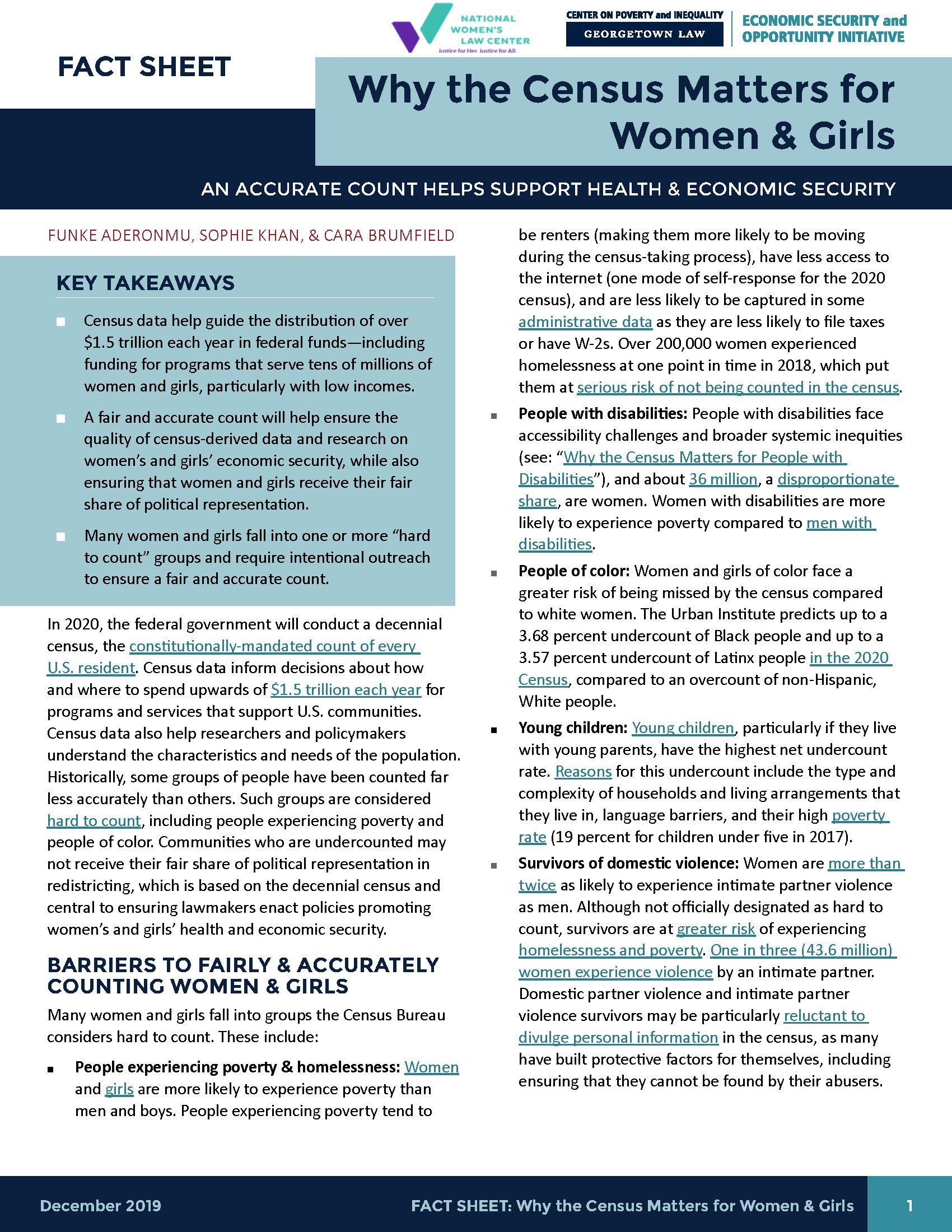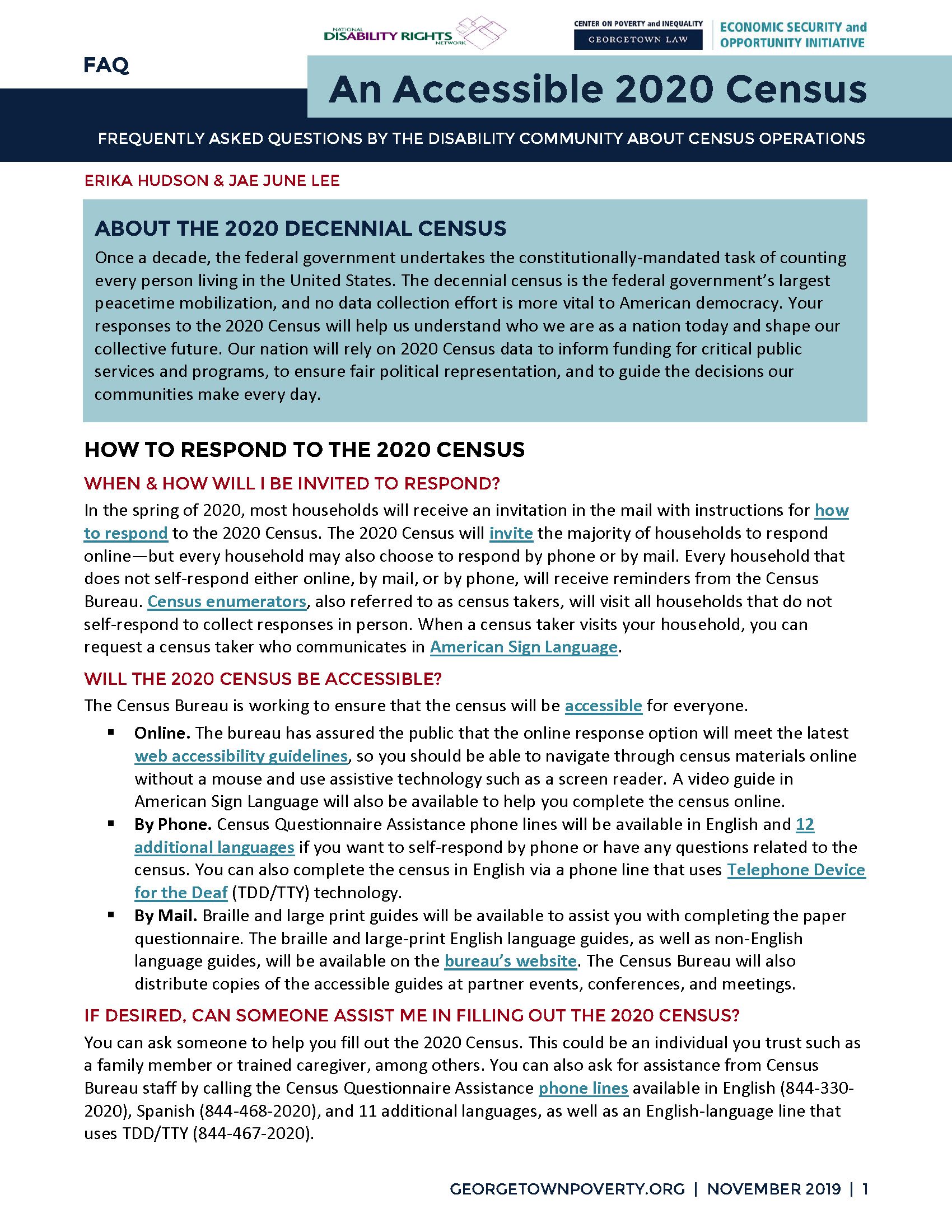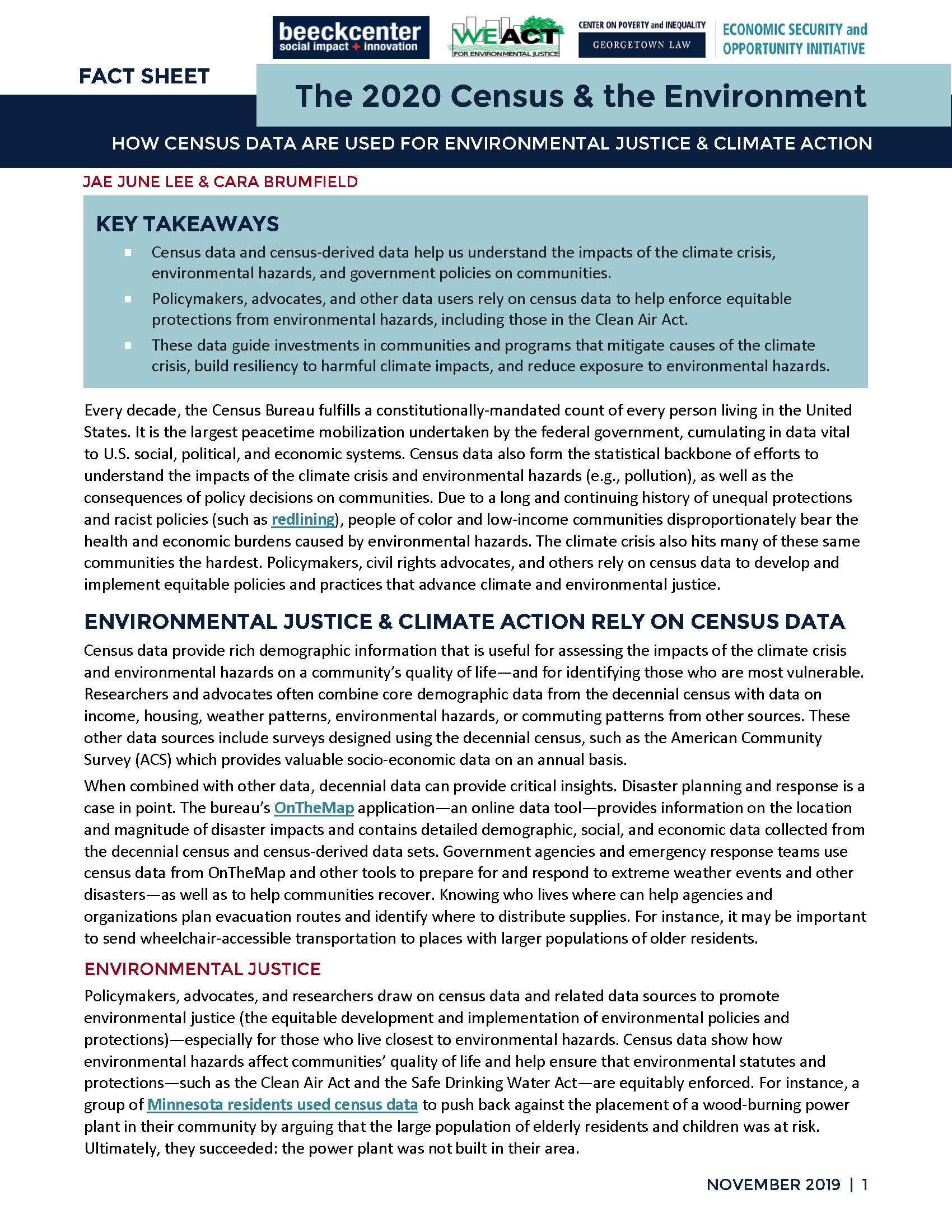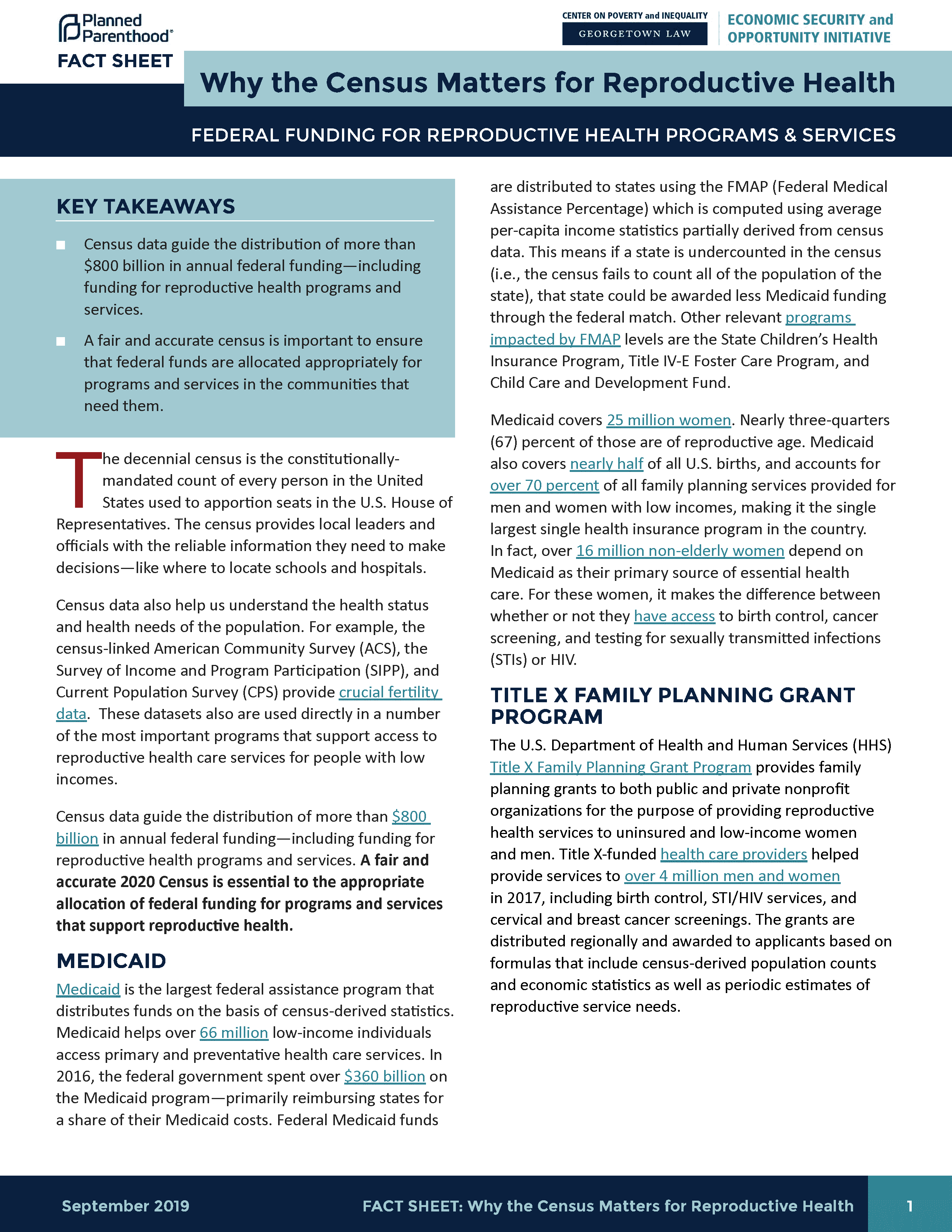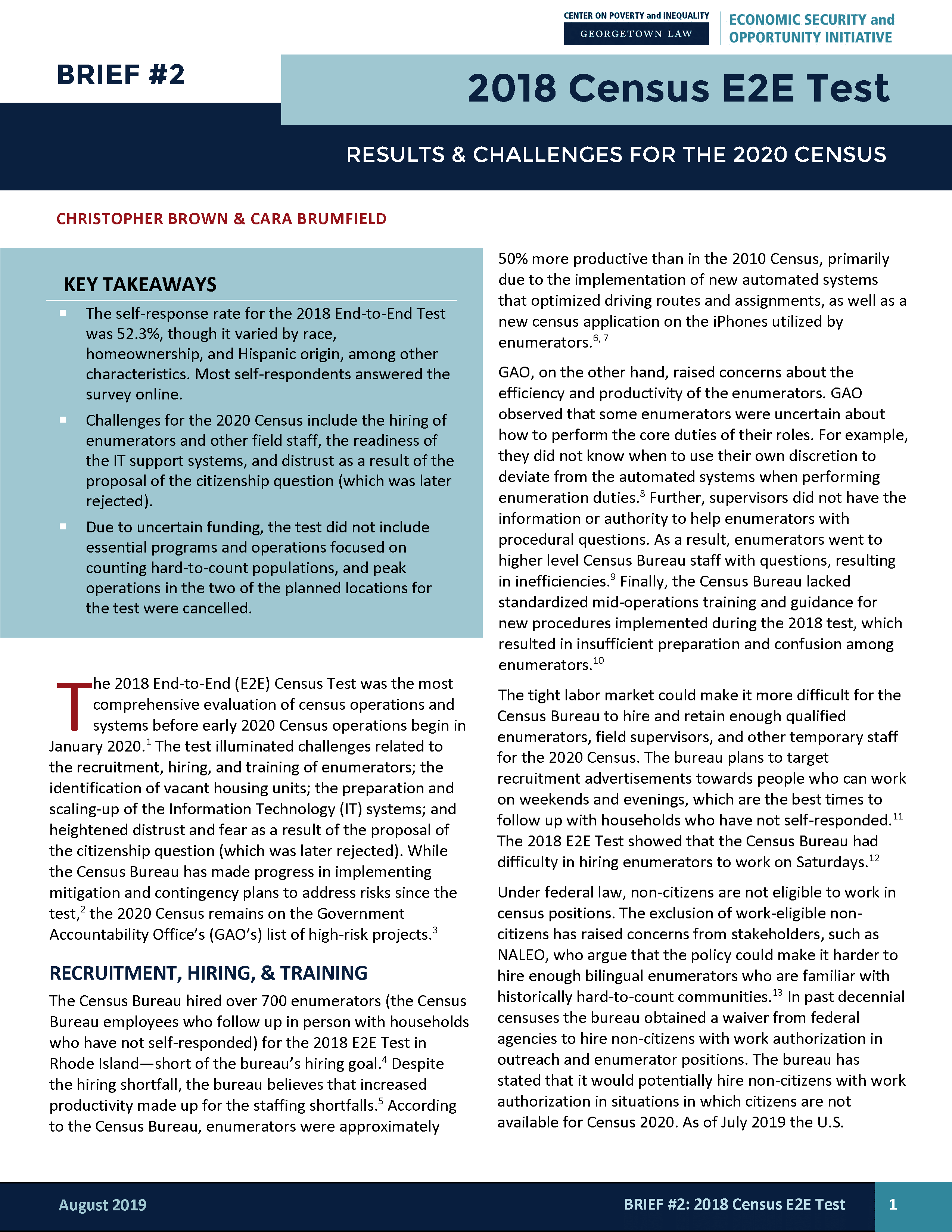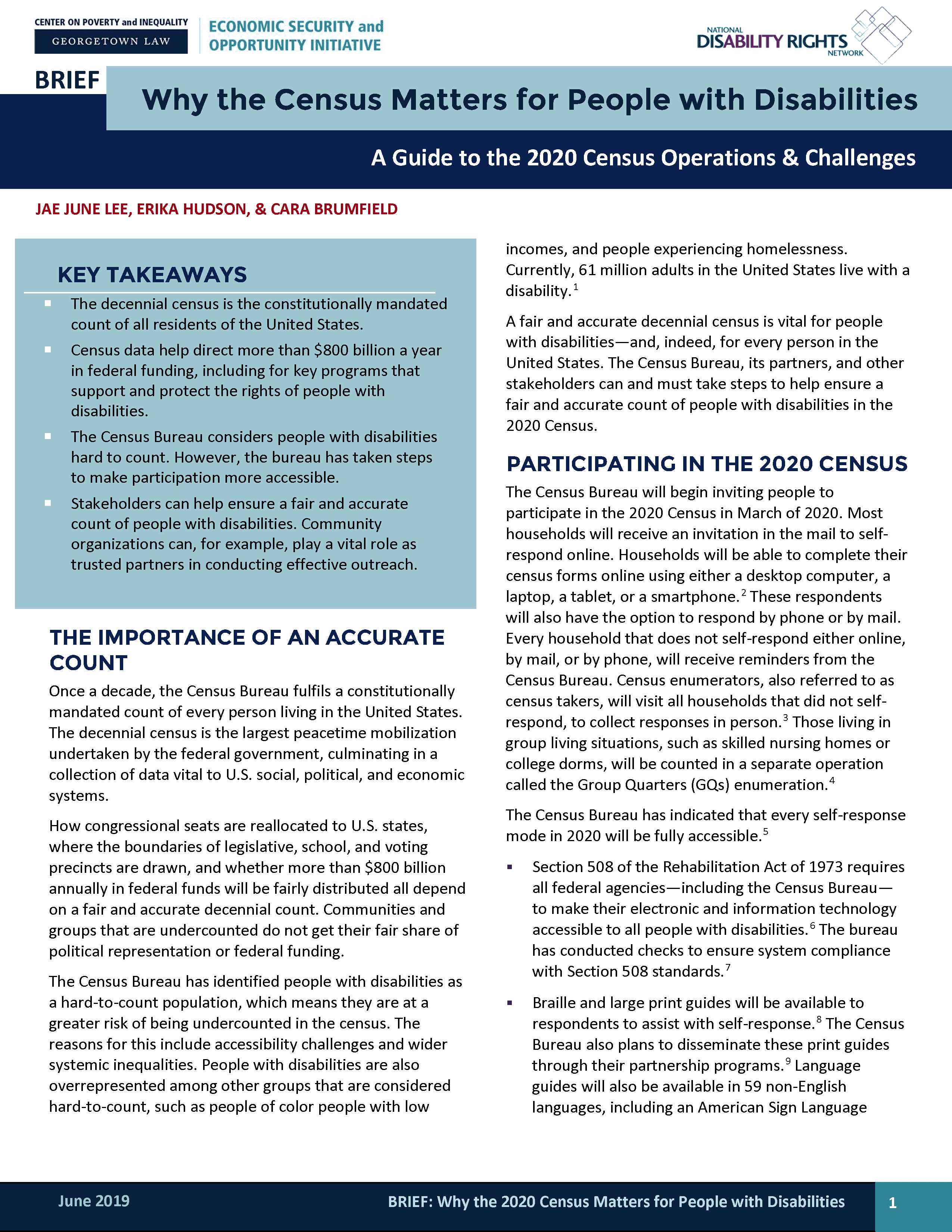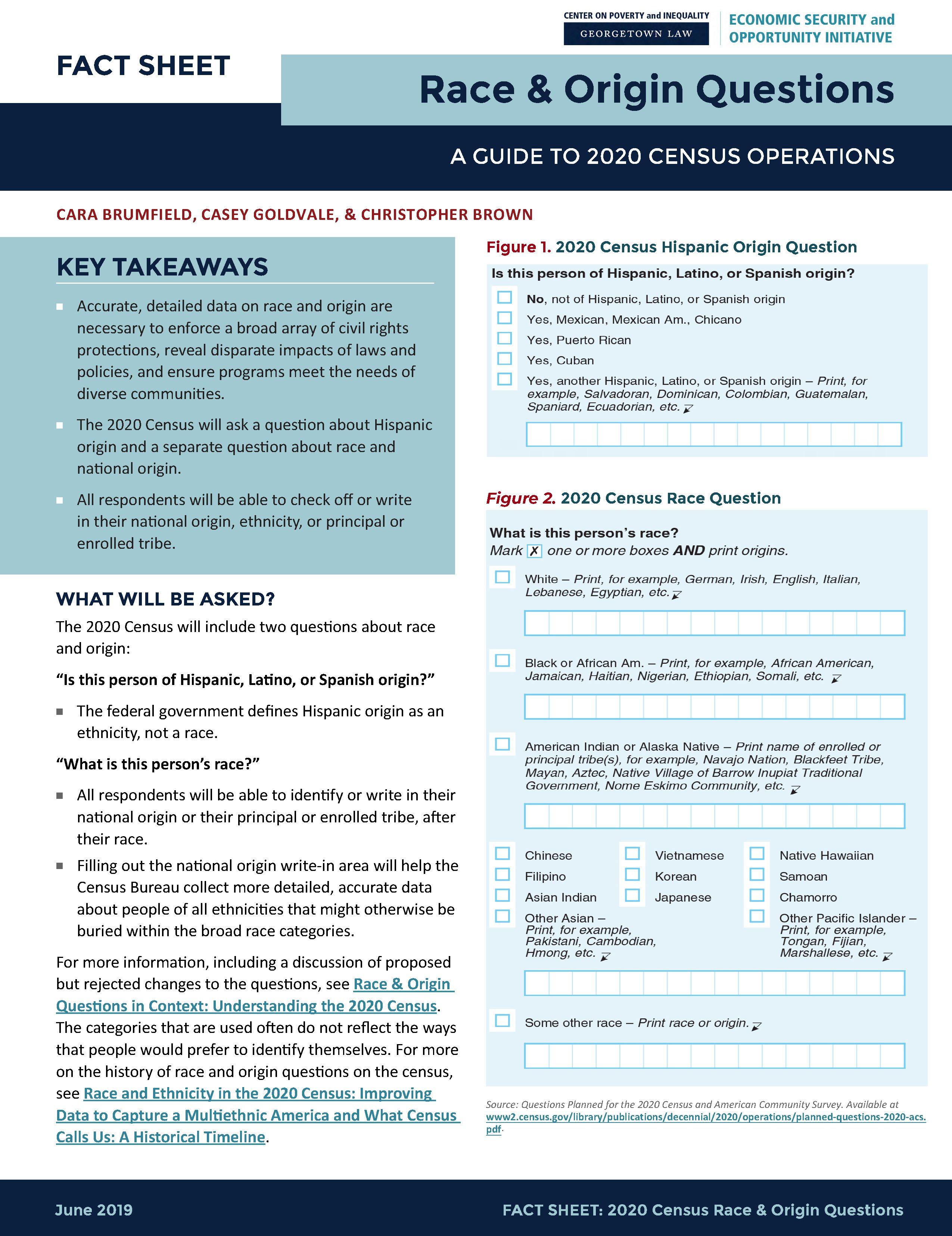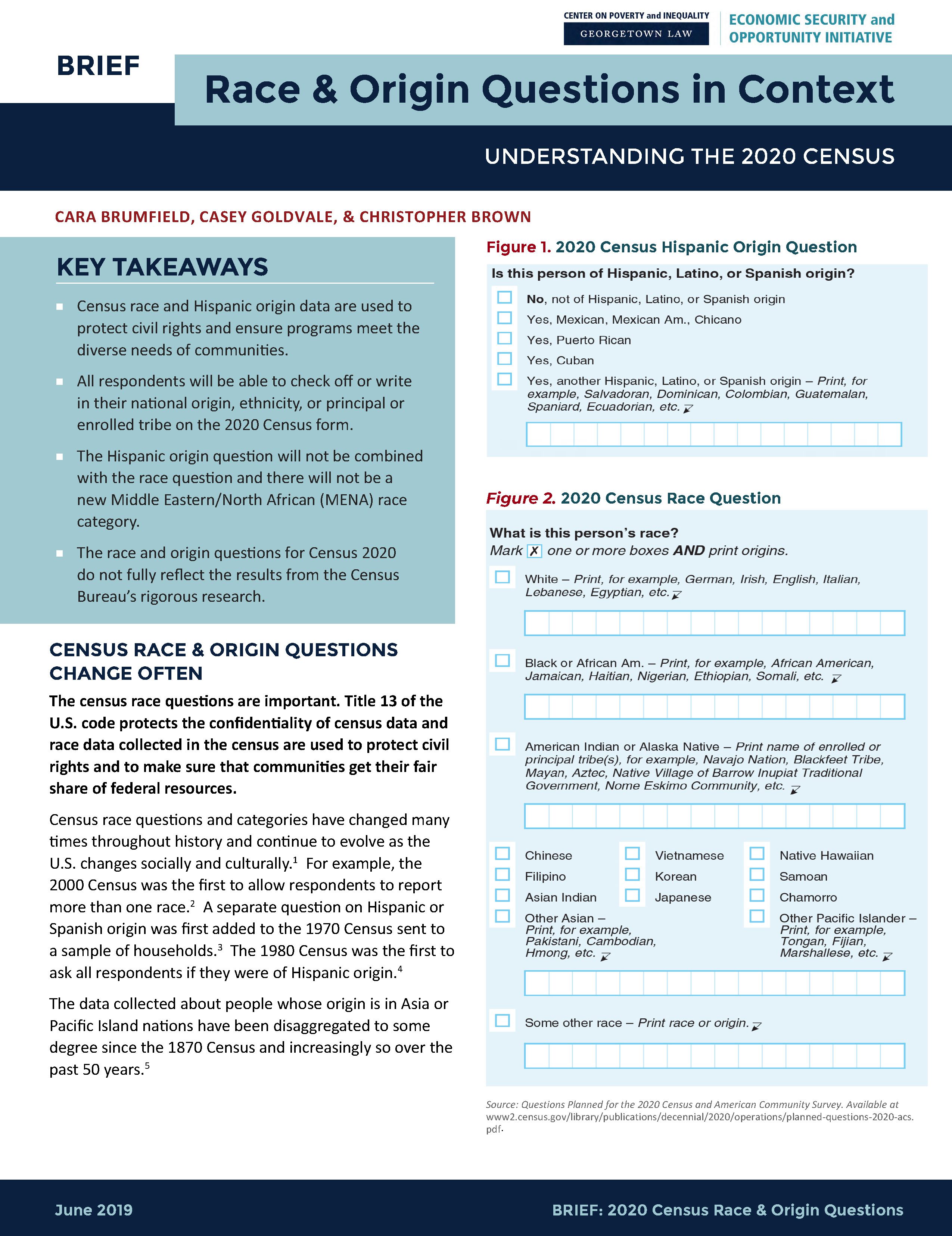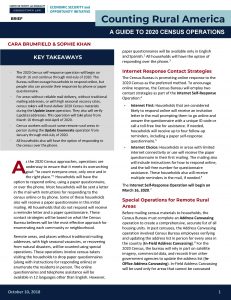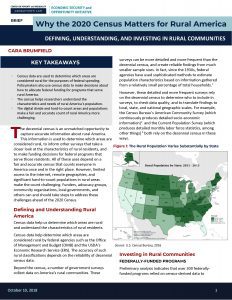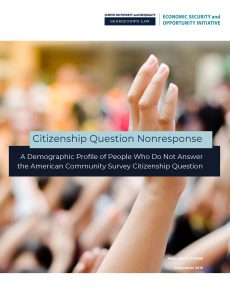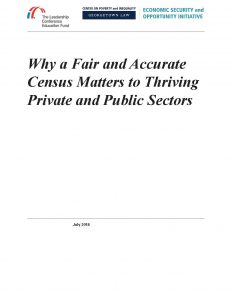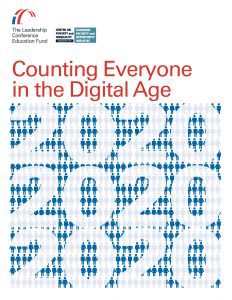2020 Census
The 2020 Census is fast approaching, and we all have a stake in a complete count. This constitutionally-mandated undertaking will shape a decade of political representation, federal funding, research, infrastructure planning, and much more. We work to make sure that everyone understands how important an inclusive and effective 2020 Census is to economic justice and political equality in the U.S.
Administrative Data in the 2020 Census: Considerations for Civil Rights Groups
2020 Census Count Question Resolution & Population Estimates Challenge Programs: Opportunities for Improving Postcensal Population Estimates
Census data are essential to equitable distribution of political power and federal resources for programs that support economic security, health, education, and more. In the years between each census, the Census Bureau produces annually-updated estimates of the nation’s population using the most recent census count as a starting point. To improve the quality of these updated population estimates, the bureau provides Tribal, state, and local governments with opportunities to identify and address a limited range of mistakes. These opportunities include the Count Question Resolution (CQR) and Population Estimates Challenge (Challenge) programs. This brief provides a clear description of these programs (and their limitations) to help stakeholders understand and engage in these opportunities to pursue more accurate population estimates.
Sheila Naughton, Jae June Lee, & Cara Brumfield
Who Responded in the 2020 Census? Variation in Tract-Level Self-Response Rates in the 2020 U.S. Census
The goal of the decennial census is to count everyone once, only once, and in the right place. However, the Census Bureau has historically overcounted certain groups—including white people—while undercounting others—including people of color, young children, and people experiencing homelessness. These gaps undermine the fairness of the census and contribute to an inequitable distribution of political power and federal resources for programs that support economic security, health, and education. This working paper examines the self-response rates to the 2020 Census by various socio-economic, demographic, and housing characteristics in order to gain timely insights into the potential accuracy of the 2020 Census.
Bill O’Hare & Jae June Lee
Differential Privacy in the 2020 Census: New Confidentiality Protections & the Implications for Data Users
The Census Bureau is modernizing its confidentiality protections for census responses. At the heart of this new approach is a mathematical definition of confidentiality called “differential privacy.” This fact sheet—published jointly with Asian Americans Advancing Justice, Data & Society, the Leadership Conference on Civil and Human Rights, and the Mexican American Legal Defense and Educational Fund—provides a brief introduction to differential privacy, outlines the implications of the changes for data users, and encourages stakeholders to provide feedback to the Census Bureau.
Evaluating the Accuracy of the Decennial Census: A Primer on the Fundamentals of Census Accuracy and Coverage Evaluation
It is perhaps more important today than ever for stakeholders to understand the key approaches and methods for measuring the accuracy of the U.S. decennial census. The 2020 Census faces extraordinary challenges that will impact its fairness and accuracy. Flawed census numbers may skew political representation and the allocation of federal funds for the next decade and affect an array of other crucial uses of census data. To help stakeholders better engage in public discussions of census accuracy and related actions, this report introduces measures and methods for evaluating census accuracy, assesses their relative strengths and weaknesses, and provides key historical context needed for interpreting the results of the census.
William P. O’Hare, Cara Brumfield, & Jae June Lee
Count People Where They Are: Census Miscounts Undermine Essential Funding for Homelessness Prevention
The Census Bureau has struggled to accurately count people experiencing homelessness in decennial censuses. Due to the unprecedented challenges of conducting the 2020 Census during the COVID-19 pandemic, people experiencing homelessness were likely undercounted and miscounted at even higher rates than in previous decades. These undercounts and miscounts may undermine the fair allocation of federal funding for public programs and services—such as the Supplemental Nutrition Assistance Program and Section 8 Housing Choice Vouchers—that help people experiencing homelessness attain a decent standard of living. This report, published jointly with the Center for American Progress and the National LGBTQ Task Force, explains why the 2020 Census may have undercounted people experiencing homelessness, outlines consequences for public programs, and offers preliminary recommendations for how to improve counts of people experiencing homelessness for the 2030 Census.
Jaboa Lake, Jae June Lee, Megan Maury, & Cara Brumfield
The Risks & Rewards of Conducting a Census in the Digital Age
As the nation’s first “digital” census, the 2020 Census will employ cutting-edge methodologies and technologies to improve the efficiency, cost, and accuracy. With consequences for determining the allocation of political power and financial resources, it is essential that the Census Bureau complete a fair and accurate count, particularly in communities historically missed in the census. This article, published in the Georgetown Law Technology Review, provides census stakeholders an overview of some of the opportunities and challenges presented by the use of big data and digital technologies in census taking.
Fulfilling a Constitutional Mandate: An Overview of How Census Data are Used to Apportion the House of Representatives
The decennial census is key to the distribution of political power in the United States. The count is the basis for the apportionment–the distribution of seats in the House of Representatives to the states according to their populations. In this joint fact sheet from the Georgetown Center on Poverty and Inequality and Asian Americans Advancing Justice, we provide an overview of the official apportionment process and timeline as a resource for census stakeholders.
Libraries’ Guide to the 2020 Census
GCPI and the American Libraries Association created a resource guide for librarians to use in supporting a fair and accurate count in the 2020 Census. Ensuring an accurate count of everyone in the 2020 Census is crucial for the appropriate distribution of federal funding and for reapportionment. Libraries can play an important role by answering questions about the census, providing access to internet-connected computers, helping to fight misinformation, and more.
Why the Census Matters for Women & Girls
Census data help guide the distribution of federal funds for programs that serve millions of women and girls with low incomes. The data also help us make decisions about how to support women, girls, and their communities. This fact sheet, published jointly with the National Women’s Law Center, highlights barriers to fairly and accurately counting women and girls in the decennial census and programs that could be impacted by an inaccurate count.
Featured Series
2020 Census Group Quarters Operation
The Census Bureau uses a special Group Quarters operation to count people in group living arrangements, such as colleges, health care facilities, shelters, and correctional facilities. This 2020 Census Group Quarters Operation series, published jointly with the Leadership Conference on Civil and Human Rights and Census Counts explains the process for counting people in group quarters. The series provides Residents, facility administrators, advocates, and other stakeholders with the information needed to help ensure that group quarters are counted fairly and accurately.
An Accessible 2020 Census: Frequently Asked Questions by the Disability Community About Census Operations
The Census Bureau is working to ensure that the 2020 Census will be accessible for everyone. This FAQ—published jointly with the National Disability Rights Network—provides answers to questions we see most often about census operations and accessibility.
Erika Hudson & Jae June Lee
The 2020 Census & the Environment: How Census Data Are Used for Environmental Justice & Climate Action
Census data are critical for advancing environmental justice and climate action. Researchers, advocates, and policymakers rely on accurate census data to identify the disparate impacts of the climate crisis, enforce an array of environmental protections, and ensure programs meet the needs (both short- and long-term) of diverse communities. This fact sheet is published jointly with WE ACT for Environmental Justice and the Beeck Center for Social Impact and Innovation.
Why the Census Matters for Reproductive Health
Census data guide more than $800 billion in federal funding—including funding for reproductive health. This fact sheet, published jointly with Planned Parenthood, explores some of the reproductive health programs and services that rely on a fair and accurate 2020 Census count.
2018 Census End-to-End Test: Results & Challenges for the 2020 Census
This issue brief provides an overview of the results of 2018 End-to-End (E2E) Census Test, often called the “dress rehearsal.” As the last, most comprehensive test before 2020 Census operations begin, the E2E Census Test is fundamental to the 2020 Census’ goal: “to count everyone once, only once and in the right place.”
Why the Census Matters for People with Disabilities: A Guide to the 2020 Census Operations & Challenges
This issue brief, published jointly with the National Disability Rights Network (NDRN), describes the importance of counting people with disabilities in the 2020 census. The brief also explores how people with disabilities will be counted and related challenges. If this population is not counted accurately, the result may be unequal political representation and unequal access to vital public and private resources for people with disabilities and their communities.
Race & Origin Questions: A Guide to 2020 Census Operations
Accurate, detailed data on race and origin are necessary to enforce a broad array of civil rights protections, reveal disparate impacts of laws and policies, and ensure programs meet the needs of diverse communities. This fact sheet is a guide for responding to the 2020 Census race and origin questions.
Race & Origin Questions in Context: Understanding the 2020 Census
Accurate, detailed data on race and origin are necessary to enforce a broad array of civil rights protections, reveal disparate impacts of laws and policies, and ensure programs meet the needs of diverse communities. This brief provides background on the 2020 Census’ race and origin questions, including a discussion of proposed but rejected changes to the questions.
Counting Rural America: A Guide to 2020 Census Operations
This brief describes the operations that will be used to count people in rural areas. An accurate count of all rural residents is important for ensuring that rural Americans have access to the resources their communities need to thrive.
Why the Census Matters for Rural America: Defining, Understanding, and Investing in Rural Communities
Census data help determine which areas are considered rural, help us understand the characteristics of rural residents, and are used to allocate funding for programs that serve rural America. This brief, produced in partnership with The Census Project, explores some of the ways that the 2020 Census will be important for people in rural areas.
Citizenship Question Nonresponse: A Demographic Profile of People Who Do Not Answer the American Community Survey Citizenship Question
This report shares an analysis of data nonresponse to the citizenship question on the American Community Survey. Nonresponse rates vary by demographic group, but have been rising over time–showing an increased sensitivity to the question. It is expected that the nonresponse rate to the citizenship question on the 2020 Census will be even higher that the 6% nonresponse rate to the question on the ACS, and that the question will make the census more expensive and it’s results less accurate.
William P. O’Hare
HARD TO COUNT FACT SHEETS
Certain population groups—referred to as “hard-to-count”—are at a higher risk of not being fully counted in the decennial census. Some of these groups have been historically underrepresented in the decennial census for decades. Being hard-to-count can lead to unequal political representation and unequal access to vital public and private resources for these groups and their communities. These fact sheets provide further details on these populations and their risks of not being fully counted.
Counting People Experiencing Homelessness: A Guide to 2020 Census Operations
This issue brief provides an overview of how people experiencing homelessness will be counted in the 2020 Census. If this population is not counted accurately, the result may be unequal political representation and unequal access to vital public and private resources for people experiencing homelessness and their communities.
Why a Fair and Accurate Census Matters to Thriving Private and Public Sectors
Both the 2020 Census and the American Community Survey (ACS) face fiscal, operational, and policy threats that could jeopardize a fair and accurate count and weaken the data that shape thriving public and private sectors. This resource explains the vital roles the 2020 Census and ACS play in the health care, education, housing, local government, transportation, and manufacturing sectors and the steps stakeholders can take to protect the surveys.
2018 Census End-to-End Test Issue Brief #1: Importance and Risks
This issue brief provides an overview of what observers and stakeholders should expect from the 2018 End-to-End (E2E) Census Test, often called the “dress rehearsal.” As the last, most comprehensive test before 2020 Census operations begin, the E2E Census Test is fundamental to the 2020 Census’ goal: “to count everyone once, only once and in the right place.”
The Census and Health Care
The Census and the American Community Survey (ACS) produce some of the best data for understanding the nation’s different sectors and the people they serve. Both surveys currently face fiscal, operational, and policy threats that could jeopardize a fair and accurate count, weakening the data that ensure thriving public and private sectors. This fact sheet explains the vital roles the 2020 Census and ACS play in the health sector and the steps stakeholders can take to protect them.
Counting Everyone in the Digital Age: The Implications of Technology Use in the 2020 Decennial Census for the Count of Disadvantaged Groups
The Leadership Conference Education Fund (The Education Fund) and the Georgetown Center on Poverty and Inequality are excited to release a new report, “Counting Everyone in the Digital Age: The Implications of Technology Use in the 2020 Decennial Census for the Count of Disadvantaged Groups”. Ensuring a fair and accurate 2020 Census is crucial to our democracy and economy.

